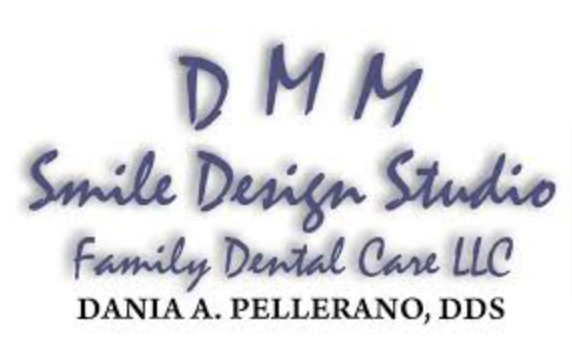
BLOG

How Common Is TMJ Disorder? Key Facts You Should Know
Are you one of the millions dealing with jaw pain or discomfort? If so, you might be experiencing TMJ disorder, a common yet often misunderstood condition. From clicking sounds in your jaw to headaches that just won't quit, TMJ can disrupt daily life in more ways than one. Understanding this disorder is crucial for effective management and treatment. Whether you're living in Albuquerque, NM, or elsewhere, knowing how prevalent TMJ is can help you make informed decisions about your health. Let’s dive into some key facts about TMJ disorder and explore what it means for you.
Understanding TMJ Disorder
TMJ disorder, or temporomandibular joint disorder, affects the joints that connect your jawbone to your skull. These joints are responsible for every movement of your jaw—talking, chewing, and yawning. When they malfunction due to various factors, discomfort can ensue.
This condition can manifest in several ways. Some people experience pain around the jaw area or even earaches. Others might notice an audible clicking sound when they open or close their mouths.
The exact cause of TMJ disorders may vary from person to person. Common culprits include stress-induced teeth grinding and misaligned jaws. In addition, injuries to the face or prolonged arthritis can also play a role in developing this issue.
Understanding TMJ is essential for recognizing its impact on daily activities and overall quality of life. Awareness opens doors to effective management strategies tailored just for you.
Prevalence and Statistics of TMJ Disorder
TMJ disorder, or temporomandibular joint disorder, affects millions worldwide. Recent studies indicate that nearly 10 million Americans suffer from this condition.
The prevalence varies across demographics but is notably higher among women aged 20 to 40. This suggests hormonal influences may play a role in its development.
Geographically, awareness and diagnosis rates can differ significantly. In Albuquerque, NM, many residents are becoming increasingly knowledgeable about TMJ and its implications.
Many cases remain undiagnosed due to overlapping symptoms with other conditions. Headaches and ear pain often lead individuals to seek treatment without realizing they have TMJ disorder.
Understanding these statistics helps highlight the importance of recognizing symptoms early for effective intervention and management strategies tailored for those living in Albuquerque and beyond.
Risk Factors for Developing TMJ Disorder
Several factors can increase the likelihood of developing TMJ disorder.
- One significant risk factor is stress. High stress levels often lead to teeth grinding or jaw clenching, which can strain the jaw muscles and joints.
- Another contributing element is dental issues. Misalignment of teeth or bite problems may put extra pressure on the temporomandibular joint, which can cause discomfort and pain over time.
- Injuries to the jaw area are also critical. Trauma from accidents or sports injuries can disrupt normal functioning and lead to inflammation in the joints.
- Hormonal changes might play a role too. Certain demographics, particularly women during hormonal shifts, report higher instances of TMJ disorders.
- Habits like nail-biting or chewing gum excessively could exacerbate symptoms by placing undue strain on your jaw muscles. Understanding these risk factors helps identify potential causes for individuals experiencing discomfort related to their jaws.
Symptoms of TMJ Disorder
- TMJ disorder often presents a variety of symptoms that can be both uncomfortable and confusing. Many individuals experience jaw pain, especially in the mornings or after prolonged periods of talking.
- You might also notice clicking or popping sounds when you open your mouth. This can be alarming but is quite common with TMJ issues.
- Headaches are another frequent complaint. They may feel like tension headaches, occurring regularly as a result of muscle strain around the jaw area.
- Some people report difficulty chewing or biting down on food without discomfort. This can lead to changes in diet due to avoidance of certain foods.
- Additionally, ringing in the ears, known as tinnitus, sometimes accompanies TMJ disorders. The interconnectedness of these structures means one issue often leads to another. If you're experiencing any combination of these symptoms, it’s wise to consult a healthcare professional for guidance. Contact us to learn more.
Diagnosis and Treatment Options for TMJ Disorder
Diagnosing TMJ disorder typically involves a thorough examination by a healthcare professional. They will review your medical history and may perform imaging tests like X-rays or MRIs to assess the condition of the jaw joint.
Treatment options can vary depending on the severity of symptoms. For mild cases, conservative approaches such as physical therapy, stress management, and over-the-counter medications are often effective.
In more severe situations, dental splints or mouthguards might be recommended to alleviate pressure on the jaw. These devices help prevent teeth grinding and provide relief during sleep.
For persistent pain not relieved by these methods, surgical interventions could be considered. This might include arthroscopy or even joint replacement in rare cases.
Early diagnosis plays a crucial role in successful treatment outcomes for those living with TMJ in Albuquerque, NM. Regular follow-ups ensure that any changes are addressed promptly.
Lifestyle Changes to Help Manage TMJ Disorder
Making small lifestyle changes can significantly alleviate TMJ disorder symptoms.
- Start by being mindful of your jaw position throughout the day. Keeping your teeth slightly apart and lips closed can reduce strain on the jaw muscles.
- Incorporating stress-reduction techniques is also beneficial. Practices like yoga, meditation, or deep breathing exercises help relax both mind and body, which may ease tension in the jaw area.
- Diet modifications play a role too. Opt for softer foods that require less chewing, avoiding hard or chewy items that could exacerbate discomfort.
- Regular exercise contributes to overall well-being as well. Gentle stretches for the neck and shoulders can relieve tightness that might affect jaw function.
- Consider using heat or cold therapy when pain arises. A warm compress can soothe sore muscles, while ice packs may reduce inflammation effectively.
Conclusion: Seeking Professional Help for TMJ Disorder
TMJ disorder can significantly impact daily life. If you suspect that you might be experiencing symptoms related to TMJ, it’s essential to consult with a healthcare professional. They can provide an accurate diagnosis and tailor a treatment plan specifically for your needs.
In Albuquerque, NM, various specialists are available to help manage this condition effectively. Whether you require physical therapy, dental adjustments, or lifestyle recommendations, seeking expert advice is crucial. Don’t let discomfort disrupt your quality of life—taking the first step towards relief could make all the difference in regaining your comfort and well-being.
To find out more about the dental services offered at our dental practice, call (505) 292-8515 or schedule an online consultation. You can also visit Dentist Albuquerque, NM at 8400 Osuna Rd NE, Suite 5B, Albuquerque 87111.
Office Hours
MON - THU8:00 am - 5:00 pm
FRI - SUNClosed






comments